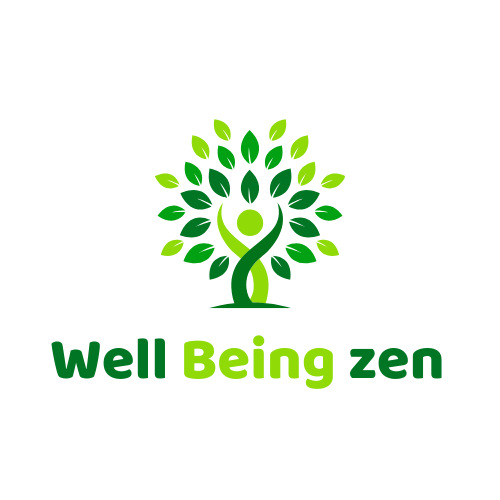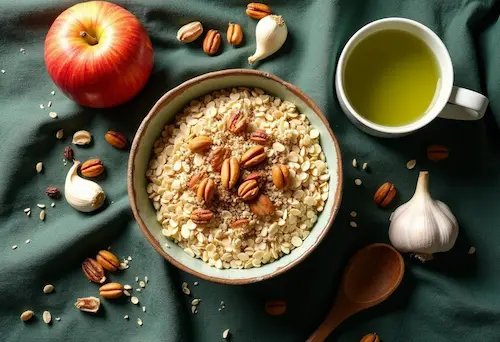Making proactive lifestyle changes to control high blood pressure is the most powerful and effective way you can partner with your doctor to manage your condition and protect your long-term health. It’s 2 AM in Pune, a time when a recent high BP reading or a doctor’s serious warning can weigh heavily on the mind. It’s easy to feel scared, overwhelmed, and as though your health is suddenly out of your hands.
But please, take a deep, calming breath. A diagnosis of high blood pressure is not a sentence; it is a turning point. It is your body’s signal to you to start making mindful, loving choices. While medication is an essential tool prescribed by your doctor, the daily choices you make are the very foundation upon which a healthy, vibrant life is built.
This guide is about empowerment. It’s about the simple, profound changes you can start making today to take back control.
A Crucial Disclaimer: This information is for educational purposes only. The lifestyle changes suggested here are meant to support and complement your doctor’s advice and prescribed medication, not replace them. Always consult with your healthcare provider before making any significant changes to your health regimen.
Table of Contents
Understanding High Blood Pressure: The ‘Silent Killer’
High blood pressure (or hypertension) is often called the “silent killer” because it typically has no obvious symptoms, yet it quietly increases your risk for serious health problems like heart attacks and strokes. It simply means that the force of the blood pushing against your artery walls is consistently too high, forcing your heart to work harder than it should. The good news is that it is highly manageable, and your daily habits are your greatest ally.
Your Action Plan: 5 Key Lifestyle Changes to Control High Blood Pressure
Think of these five areas as the pillars of your new, healthier lifestyle.
1. Embrace a DASH-Inspired Diet (with an Indian Twist)
The DASH (Dietary Approaches to Stop Hypertension) diet is a globally recommended eating plan for managing BP. Its principles are simple and fit beautifully into an Indian diet.
- The Principles: Focus on eating fruits, vegetables, and whole grains. Include lean protein and low-fat dairy. Most importantly, significantly reduce your sodium (salt) intake.
- Making it Indian and Practical:
- Reduce Salt: The biggest challenge in our diet. Be mindful of the high salt content in pickles (achar), papads, chutneys, and packaged snacks. Use herbs and spices like ginger, garlic, turmeric, and coriander to flavour your food instead of extra salt.
- Increase Potassium: Eat more vegetables and fruits like bananas, pomegranates, and spinach, as potassium helps to lessen the effects of sodium.
- Choose Whole Grains: Opt for whole-wheat rotis, brown rice, and millets like jowar and bajra.
- Lean Protein: Focus on dals, legumes, sprouts, paneer, fish, and skinless chicken.
2. Move Your Body Mindfully (Regular Exercise)
Regular physical activity is a non-negotiable part of your plan.
- Why it works: Exercise strengthens your heart, so it can pump more blood with less effort. This reduces the force on your arteries, lowering your blood pressure.
- What to do: Aim for at least 30 minutes of moderate-intensity exercise most days of the week. You don’t need a gym.
- Brisk Walking: A simple walk in your local park is one of the best exercises.
- Yoga: Certain yoga asanas and the practice’s focus on breath can be incredibly effective for both physical and mental relaxation.
- Cycling or Swimming: Excellent cardiovascular workouts that are gentle on the joints.
3. Master Your Stress (Stress Management)
The link between chronic stress and high blood pressure is undeniable. When you’re stressed, your body produces a surge of hormones that temporarily increase your blood pressure.
- Why it’s a crucial lifestyle change: Learning to manage stress effectively is key to long-term BP control. This is one of the most important lifestyle changes to control high blood pressure.
- What to do:
- Pranayama (Yogic Breathing): Simple breathing exercises like Anulom Vilom (alternate nostril breathing) or deep belly breathing for 5-10 minutes a day can have a profound calming effect.
- Meditation: A daily meditation practice can help to lower stress levels and improve your overall sense of well-being.
- Spend Time in Nature: Even a short walk in a green space can help to reduce stress.
4. Prioritize Restful Sleep
Sleep is not a luxury; it is a biological necessity.
- Why it works: During normal sleep, your blood pressure goes down. Consistently poor sleep means your blood pressure stays higher for longer periods. Over time, this can contribute to hypertension.
- What to do: Aim for 7-8 hours of quality sleep per night. Create a relaxing bedtime routine, avoid screens before bed, and ensure your bedroom is dark, quiet, and cool.
5. Limit Alcohol and Quit Smoking
These two factors have a direct and significant impact on your blood pressure.
- Why it’s essential: Smoking chemicals damage the lining of your artery walls and raise your blood pressure. Drinking too much alcohol can also raise blood pressure to unhealthy levels.
- What to do: If you smoke, quitting is the single best thing you can do for your heart health. If you drink alcohol, do so in moderation, as advised by your doctor.
Conclusion: A Journey of a Thousand Steps Starts with One
A high blood pressure diagnosis is not an end; it is a beginning. It is the start of a journey where you become the most important member of your own healthcare team. You have the power to influence your health in profound ways through the choices you make every single day.
Don’t feel overwhelmed by this list. Start with one small, manageable change. Perhaps this week, you can focus on reducing the salt in your cooking or going for a 20-minute walk every evening. These small steps, when taken consistently, lead to massive transformations. You can do this.
What is the first small, positive change you are inspired to make for your health tomorrow? Share your commitment with our supportive community in the comments below.




